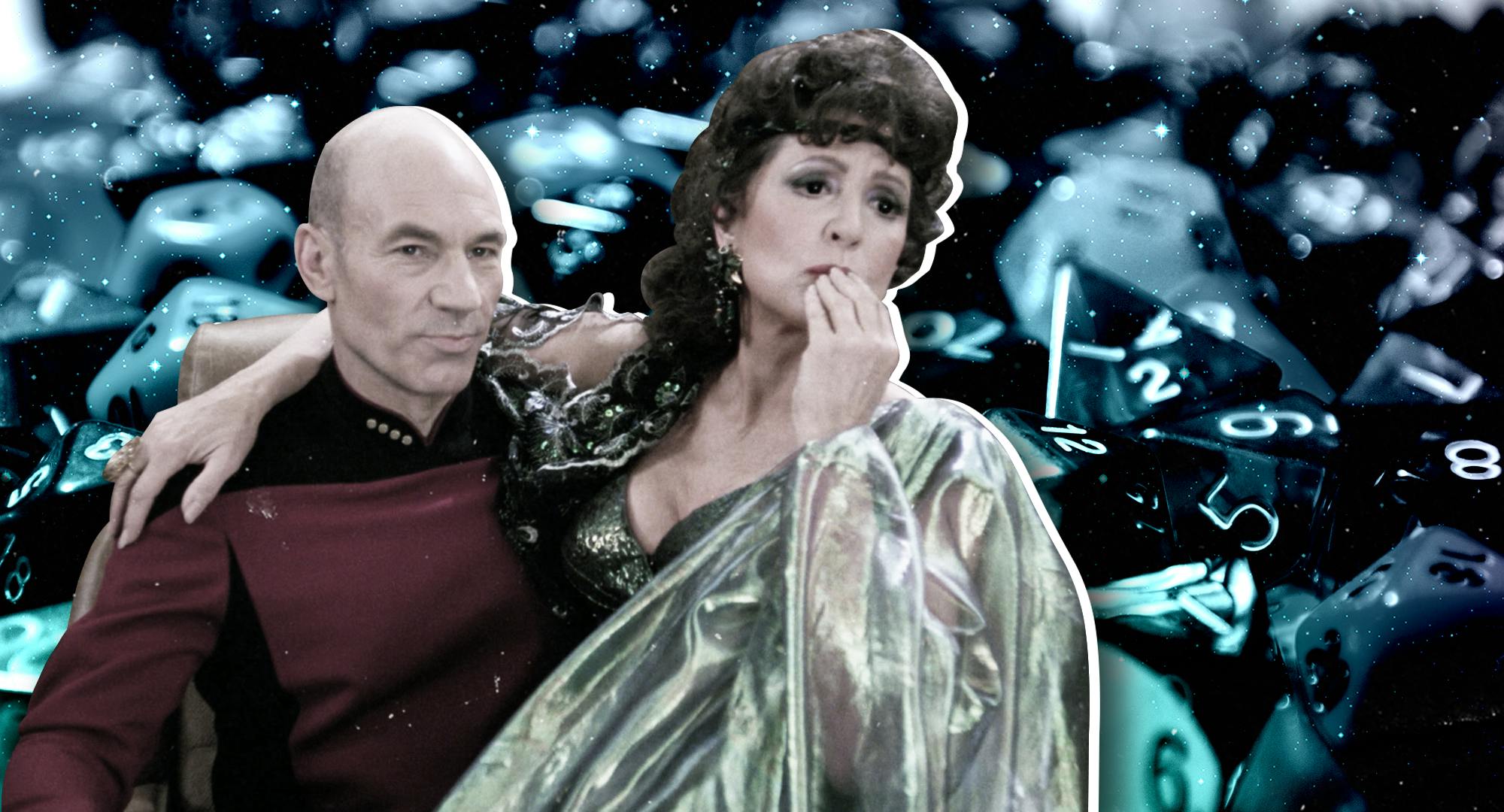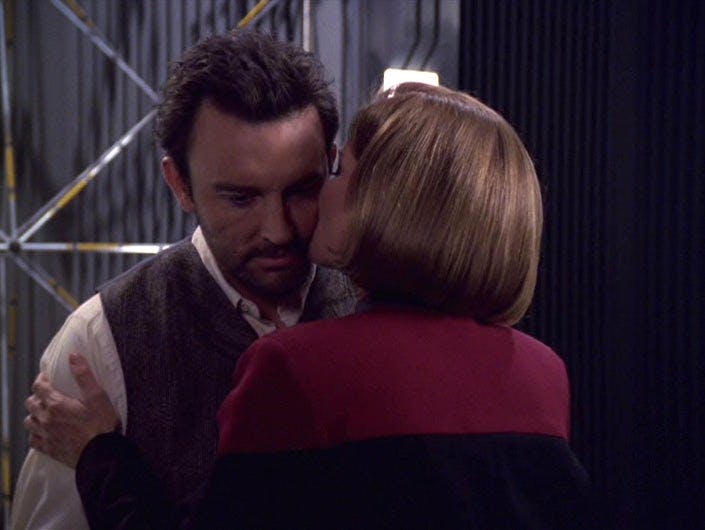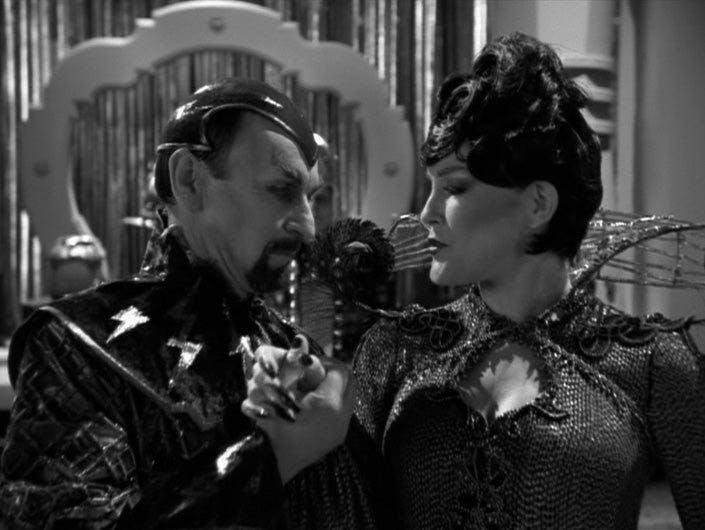Published Feb 14, 2020
Make Sure You've had this Talk Before Starting Your Next Campaign!
There's plenty of room for romance in Star Trek Adventures. Here's how to make it fun for all!

StarTrek.com
Valentine’s Day is today. In celebration, we’re spending the week celebrating love in all the forms it takes throughout the quadrants. L(ove)LAP ?
Sex and romance are important elements in every Star Trek series. Fans have enjoyed a few jokes about the crew members with a certain reputation for sleeping their way across the galaxy, but Trek also features several thoughtful and nuanced romantic relationships that explore the humanist themes of the show.
As Star Trek Adventures was built to emulate the fiction of the shows and films, it seems like there is a place for romantic themes within games. There certainly is, but as a mature topic, romance should be handled with care and gravitas between everyone at the table. Not everyone wants a romantic subplot tossed their way any more than they would want to be turned into a Borg or learn to speak Klingon in the course of a game. The key to successful in-game relationships is the same as ones in real life... communication.
Consent Is Key From Session Zero

StarTrek.com
“Session zero” is the term for the time everyone gets together to make characters to play a game. There’s a lot going on here; players are making choices, doing math and putting forward the elements that they want to see in the upcoming series. Do they want the intrigues of a Deep Space 9 style story or the clearer morality of Star Trek: The Next Generation? The GM should be an active participant in these discussions rather than just watching their friends fill out paperwork. The GM has some ideas in mind for the game, the players have their own and the game springs from a mixture of the two.
In addition to elements like exploration, ship battles and political maneuvering, this is a great time to ask about the inclusion of romance. Even if everyone at the table shuts it down, that’s a good thing for the GM to know before they decide to hang a plot on characters hooking up. It’s also okay for tables to have a mixed reaction; some players don’t care about the romance subplots in video games like Mass Effect; others play through the game to hit each relationship at least once. Players who are enthusiastic about the idea can work with the GM on good partner(s) for their characters and good episodes where their relationship might come into play.
Some tables might not be comfortable discussing the idea of romance or other sensitive topics in front of others. For groups who want to keep things more discreet, there are consent forms that players and GMs can use to make sure that uncomfortable moments can be stopped ahead of time before disrupting play. By filling out a form and giving it to the GM, players don’t have to discuss any traumas or phobias in front of their friends while letting the GM know to steer away from bad topics.
Check In Along The Way

StarTrek.com
It’s one thing to be open to the idea of romance in an RPG; it’s another thing when the opportunity presents itself. A romance subplot should be developed behind the scenes between the player and the GM like any other. It’s okay to conspire here; there are still chances for great reveals and twists based on dice rolls at the table.
Take a moment after games in between adjusting character sheets and discussing what happened to talk about what storylines are working. If folks are uncomfortable with a romantic storyline, discuss what can be done to make it work better or how it can be brought to a satisfying conclusion sooner rather than later. Relationships have similar beats along the way; the first admission of feelings, the first date and so on. Checking in before taking the next step is a good time to assess where the relationship has been and where it can go.
It’s also a good time to discuss how challenges in these relationships can be explored through a Star Trek lens. What if two beings are in love but can’t express that love in a physical manner? What if the cultural requirements for marriage cause tension in the relationship? What if an old suitor comes along to make trouble for the happy couple? All of these have potential as great story beats in a Star Trek Adventures campaign.
Stop In The Name Of Love

StarTrek.com
Sometimes, someone doesn’t know something is uncomfortable until it happens. There are tools that can make it clear everyone should stop, take a moment and reassess. Groups might use a safeword to let the GM know that they don’t want to explore a story element. Another common tool is the X-card by John Stavropolis. If something goes too far, the player simply touches the X-card on the table and the game content changes with no questions about why. Brie Beau Sheldon created the Script Change RPG Toolbox to keep the idea of consent constant throughout play. It engages at the start of the game but allows players to control content like a director throughout the game.
By using these tools at the table, Gamemasters can find the right level of romantic content to make their players fall in love with the stories told playing Star Trek Adventures.
Rob Wieland (he/him) is an author, game designer and professional nerd who developed the adventure classifications for Star Trek Adventures. He lives in Milwaukee, Wisconsin with his wife, two cats and a future Starfleet Admiral.

